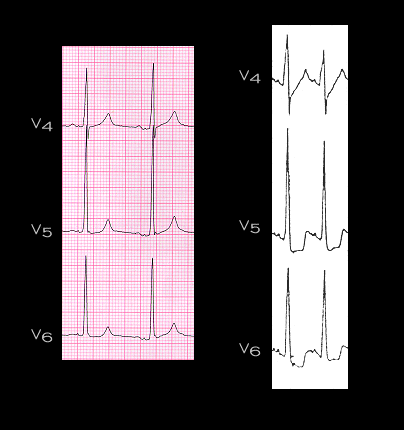
In patients with left ventricular hypertrophy or hypopotassemia and in patients receiving drugs that affect repolarization, such as digitalis and the type 1a and type 3 antiarrhythmic drugs, depression of the ST segment may be absent or minimal when the patient is at rest but more marked when tachycardia is present, such as that induced by excitement or exercise. This is illustrated here. The figure shows leads V4-V6 at rest (left) and after treadmill exercise (right) in a 40 year old male with aortic and mitral insufficiency and left ventricular hypertrophy, but with normal coronary arteries. The ECG at rest shows voltage changes suggestive of left ventricular hypertrophy but no ST segment abnormalities. With exercise, the rate is increased and there is now downsloping ST segment depression suggestive of ischemia. These ST segment changes occurred in the absence of chest pain or any other manifestations of ischemia and are the result of the left ventricular hypertrophy.
